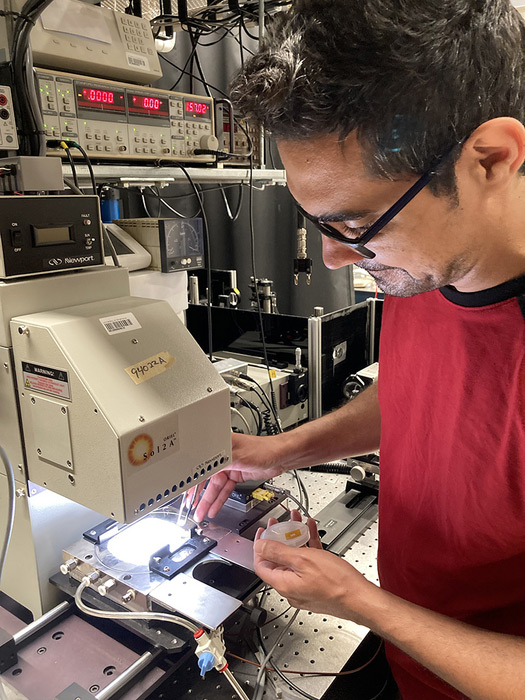News: Photovoltaics
11 October 2021
University of Oklahoma challenges Shockley-Queisser limit to solar cell efficiency
One of the greatest challenges of solar cells is the Shockley-Queisser limit - the assumption that there is a fundamental limit to the amount of energy that a solar cell can absorb and convert into usable energy. University of Oklahoma physicist Ian Sellers is showing that the widely held assumption is false.
Sellers, an associate professor in the Homer L. Dodge Department of Physics and Astronomy in the Dodge Family College of Arts and Sciences, has received a $310,000 grant from the US National Science Foundation (NSF) to demonstrate the utility of some commonly used semiconductors to significantly increase the efficiency of solar cells.
“It was always assumed a semiconductor could only convert so much energy from the sun because it would either lose energy as heat or that sunlight would be too low-energy to be captured,” Sellers says. “It was considered that this single gap limit could not be overcome,” he adds.
“What we found was a physical effect that exists in conventional optoelectronic materials already used in space solar cells,” he adds. “This is a natural effect, not related to exotic quantum structures or processes, and we realized we could make quite simple solar cells based on conventional materials already used in optoelectronics for lasers, LEDs and all kinds of things that has the potential for us to realize a very high-efficiency solar cell.”
The potential efficiency that could be realized through this process increases what until now has been considered the industry-standard limit of about 30%, to a breakthrough maximum efficiency of greater than 60%.
“One of the major problems with solar cells is that, currently, most commercial solar cells can only harness about 20% of the sun’s energy,” Sellers notes. “These solar cells absorb very high-energy light from the sun and any excess energy turns into heat. It warms up the material and that’s a loss – it’s not something a conventional solar cell converts to electricity.”
III-V semiconductors (which Sellers calls the ‘workhorse’ systems of optoelectronics) generate and conduct this unwanted heat very efficiently, making this a big problem for conventional solar cells. A conversation with a colleague at Arizona State University brought to light a potential new approach to harness this lost energy and more effectively convert sunlight to electricity before the generation of heat occurs.
“I started working with a theorist at Arizona who was working on high-mobility transistors where the effect we’re using is a problem for high-mobility transistors,” Sellers says. “What we’ve found is the ability to store excess energy in the material prior to heat generation, and we can store it there for long enough that our charge carriers – the electrons created by light absorption – can potentially be extracted before the energy is lost as heat,” he adds. “There isn’t anything exotic – it’s always existed,” he added. “It’s a natural process that is a problem in certain transistors, but for solar it could be extremely beneficial.”

Picture: University of Oklahoma graduate student Hadi Afshari measuring next-generation solar cells on the solar simulator in the Sellers Lab. Ian Sellers is the lead on a new grant to develop ultra-high-efficiency solar cells.
The three-year grant will also support graduate and undergraduate students in Sellers’ lab to gain practical skills in fundamental device physics and technology transfer.
“What students learn here is a strong understanding of how a device works and the mechanisms that inhibit improved performance, as well as the importance of finding a niche in an area that can be improved or used in a new way,” Sellers says. “They get a very unique perspective of how academic research relates to real technology.”








